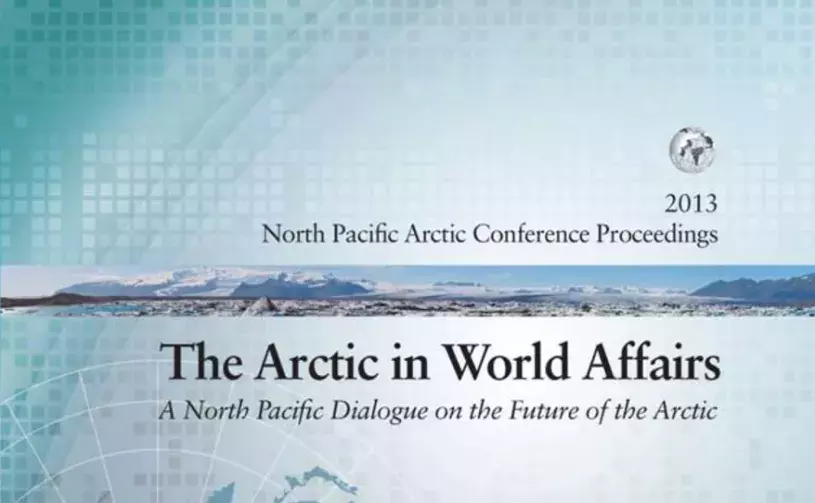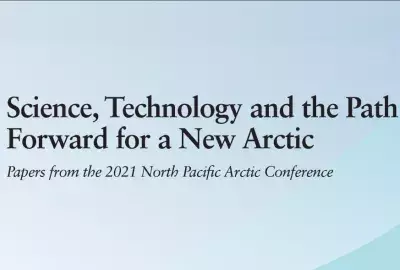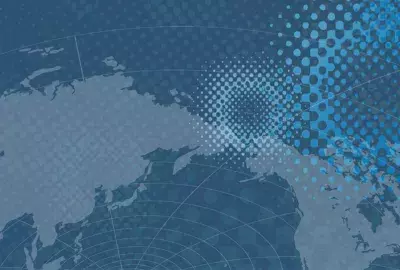Error message

The Arctic in World Affairs: A North Pacific Dialogue on the Future of the Arctic addresses future developments in five areas: Arctic maritime shipping, Arctic oil and gas development, potential Arctic fisheries, the resilience of Arctic communities, and Arctic Ocean governance. Bringing together prominent experts from the three North Pacific Arctic coastal states (Canada, Russia, and the United States) and three leading North Pacific non-Arctic states (China, Japan, and Korea), the book goes beyond generalities; it addresses the details of major concerns in an effort to identify practical solutions to Arctic maritime issues and move them from paper to practice.
Regarding shipping, the book addresses the logistical challenges of using Arctic shipping routes, paying particular attention to factors affecting the prospects for both destinational and transit shipping in the Northern Sea Route. It also explores the central challenges for the Arctic states and the global maritime community regarding international cooperation needed to address issues of safety and environmental protection associated with Arctic shipping.
On the future of Arctic oil and gas development, the book focuses on the international dimensions of seven key concerns: global energy markets; the impact of the shale gas revolution on the competitiveness of Arctic hydrocarbons; relevant technological developments; the effects of public policies in the Arctic states; environmental issues associated with the extraction of Arctic oil and gas; the impacts of such development on Arctic coastal communities; and the long-term energy needs of China, Japan, and Korea.
In the case of potential Arctic fisheries, the book provides a scientific examination of factors and conditions relevant to the migration of various species into the central Arctic Ocean and the prospects for future commercial fisheries there. Turning to issues of management, contributors ask whether it would be timely to create a regional fisheries management organization for the Arctic Ocean proper to prepare for the prospect of commercial fishing in the future.
On building resilient communities in the Arctic, the book considers the changing circumstances of the human communities of the Arctic. It explores their role in the development of the region's resources as well as the determinants of resilience in these communities.
Regarding Arctic Ocean governance, the book addresses the broad topic of how governance of the Arctic Ocean has evolved to date and possible future directions for the management of human activities that impact the Arctic marine environment.
Taken together, the contributions fill gaps in knowledge regarding the maritime Arctic, identify remaining uncertainties, and point to policy innovations that can promote peaceful and sustainable uses of Arctic resources in the future.
The Arctic in World Affairs: A North Pacific Dialogue on the Future of the Arctic addresses future developments in five areas: Arctic maritime shipping, Arctic oil and gas development, potential Arctic fisheries, the resilience of Arctic communities, and Arctic Ocean governance. Bringing together prominent experts from the three North Pacific Arctic coastal states (Canada, Russia, and the United States) and three leading North Pacific non-Arctic states (China, Japan, and Korea), the book goes beyond generalities; it addresses the details of major concerns in an effort to identify practical solutions to Arctic maritime issues and move them from paper to practice.
Regarding shipping, the book addresses the logistical challenges of using Arctic shipping routes, paying particular attention to factors affecting the prospects for both destinational and transit shipping in the Northern Sea Route. It also explores the central challenges for the Arctic states and the global maritime community regarding international cooperation needed to address issues of safety and environmental protection associated with Arctic shipping.
On the future of Arctic oil and gas development, the book focuses on the international dimensions of seven key concerns: global energy markets; the impact of the shale gas revolution on the competitiveness of Arctic hydrocarbons; relevant technological developments; the effects of public policies in the Arctic states; environmental issues associated with the extraction of Arctic oil and gas; the impacts of such development on Arctic coastal communities; and the long-term energy needs of China, Japan, and Korea.
In the case of potential Arctic fisheries, the book provides a scientific examination of factors and conditions relevant to the migration of various species into the central Arctic Ocean and the prospects for future commercial fisheries there. Turning to issues of management, contributors ask whether it would be timely to create a regional fisheries management organization for the Arctic Ocean proper to prepare for the prospect of commercial fishing in the future.
On building resilient communities in the Arctic, the book considers the changing circumstances of the human communities of the Arctic. It explores their role in the development of the region's resources as well as the determinants of resilience in these communities.
Regarding Arctic Ocean governance, the book addresses the broad topic of how governance of the Arctic Ocean has evolved to date and possible future directions for the management of human activities that impact the Arctic marine environment.
Taken together, the contributions fill gaps in knowledge regarding the maritime Arctic, identify remaining uncertainties, and point to policy innovations that can promote peaceful and sustainable uses of Arctic resources in the future.







